Recent conversations on Facebook and elsewhere revolving around the second of my 2 visual renditions of Shostakovich’s String Quartet No. 8 in C minor (see more about this below, including a link to the web version) made me realize once again that the animation world seems to suffer from attention deficit disorder: very few “experimental” or “abstract” pieces of serious duration (say over 6 minutes) and content (as with this Shostakovich music) make it into animation festivals (unlike what happens to my and other “difficult” works in film and music festivals).
With very few exceptions, “difficult” pieces are rejected unless they are eased-in, “sugar-coated” with a modicum of narrative content and/or rely on a cartoony veneer, what I call “pseudo-abstract,” images hooked on figure-ground differentiation, belonging to that “fabricated” abstraction which is far from the “lived” kind (please see my other blog entries on that https://blog.animationstudies.org/?p=680 and here https://blog.animationstudies.org/?p=346).
Pieces which are “conceptually driven,” willfully ignoring the elusive poetic layer and merely addressing themselves to the “smart” in us, not to mention catering to “techno-plumbing” and the “entertainment dependency” so dominant in our present culture in general, and in animation and the media in particular, are also often privileged over those which are genuinely elusive.
As my work seems most often to be based on the exploration of potential dialogues between music(s) and images, the choice of music I make can have an immense bearing on the acceptance of the resulting movie, that choice of music is as paramount to the acceptance of the movie as is the kind of imagery I indulge in.
To be sure, Shostakovich’s music is likely a hard pill to swallow for most, not to mention the music of Steve Reich http://vimeo.com/album/2985622,
John Adams http://vimeo.com/85285097,
Morton Feldman http://vimeo.com/35784706,
Mikel Kuehn http://vimeo.com/album/2985542,
Pierre Jalbert http://vimeo.com/album/2985369,
Michael Oesterle http://vimeo.com/album/2985369,
Wilfried Jentzsch http://vimeo.com/album/2985592,
Matthew Owens http://vimeo.com/67879782,
Donald Meyer http://vimeo.com/album/2985607,
Jean Derome http://vimeo.com/album/2985448
and Jean René (with whom I also made “Chosta”) http://vimeo.com/album/2985580.
Even music as essential to our cultural make-up as Stravinsky’s “Rite of Spring” can be difficult to absorb for many (it is remarkable how this music, created over a century ago, has kept an edge that many other pieces, closer to us in time, have long lost):
Le Sacre du printemps:
Indeed, a quick survey I ran amongst several of my viewers (approaching 300,000 thus far on Vimeo) indicated that, for the most part, people would not listen “on their own” to many of the music pieces I have been working with/from/to (in that respect, my work may have an impact on the type of music my viewers are exposed to, a “public service?” ;-).
And yet, the music of the composers with which my images dialogue is very much in tune with the best of what (the evolution of the form of) painting has offered us for centuries, including our own century.
This reminds me of a survey I heard about years ago, a survey made by Michael Fukushima (then a producer at the NFB) when I was working on my two NFB films (in 2004-2005), a survey which claimed that audiences lose interest in abstract animation if longer than 6 to 6 1/2 minutes.
With my composer (Jean Derome), we had to fight tooth and nail to be granted the permission to go as long as 9 minutes and a bit for our “Liaisons” (https://www.nfb.ca/film/liaisons_fr), we could easily have brought it to the 50-minute mark.
And yet, our producer (Marcel Jean) was right when he told us that the longer duration was going to cost us official selections in festivals (I since was told by a couple of festival directors something like: “we love your work but could you please make it shorter?”).
I refused, and always will (all that being strongly reminiscent of the famous “Too many notes!” line in Miloš Forman’s magnificent “Amadeus”;-).
This paints a situation which reenforces my belief that animation is (most often, but not only) leaning heavily towards the ”entertainment” side of things, or as I have written before, which belongs much more to the “19th Century Salon” category than to the world of a genuine search for meaning.
Years ago, when sudden deadly allergies to natural media forced me to make the switch to digital, I was very fortunate to receive help from friends who made me try the right computer (a Mac) and software (Painter) at a time when I thought all was lost.
Five minutes with that Mac (a Power Mac 7100 or maybe a 7500, the current model at that time, my first-ever session on/at a computer) using the (then) current version of Painter (Fractal Design’s version 4, some of us may remember that paint can and its smell as one opened it?) immediately brought me back inside my painter’s bubble, and I was granted a new lease on life (much gratitude here, at least thus far…;-).
After a couple of years learning that new (to me) medium and finding/creating ways by which I could continue what I had been doing for decades with natural media (I had to fight hard against the “cleanliness” of computer-generated graphics in order to create “looks” and conditions by which, in which, “accidents” could happen along the lines of my natural media work, my first encounter with the pernicious underlying “photorealism” aesthetic I now see almost everywhere), exclusively focusing on “still” images, I was strongly encouraged (“pushed” would be more accurate) by an old friend to explore the possibilities of animation.
I hereby publicly “blame” that friend, David Poole, who was then head of Media Arts at the Canada Council for the Arts (he is retired now), for my eventually being seduced by that new field of exploration.
David was so convinced I had to try my hand at animation that he went as far as obtaining a pass for me to the 1998 Ottawa International Animation Festival, which I (reluctantly) attended on a daily basis (I then lived in Ontario on a small organic farm less than an hour’s drive from Ottawa).
I went from screening to screening, constantly asking myself “What the hell am I doing here?” until, in David’s company, I saw a Mary Ellen Bute retrospective (she was totally unknown to me at the time, I came from the world of painting and knew nothing of animation, other than the obvious Disney’s and some of the work of McLaren, all of which I perceived as being a form of “sub-genre” to the Art that was at the centre of my life).
I immediately recognized in Bute’s work concerns and avenues of explorations I could deeply associate with, in line with what had gotten me permanently and passionately into painting for so many years. I saw in her work a deep connection with issues such as Philip Guston’s “inherent composition,” and a significant pursuit of that which lies beneath (as in “prior to”) our sense of “good taste,” beneath the craving for what can be called “eye candy” today (Guston, de Kooning and all talked about “paint pushing,” we now have its digital form, “pixel pushing”).
Mary Elen Bute’s work made me realize that serious work was possible in animation, it made me see that this art form could deal with issues that mattered to me (still do).
It did not have to limit itself to what most (not all) of the movies presented during that festival were limiting themselves to.
To (try to) make a long story short, I had little interest in what most animations I had seen in Ottawa were dealing with. I felt them to be very poor in terms of the level of drawing (“illustrations” in a pejorative sense, restricted to a form of drawing that caters to the societal models of “the real,” hence my comparing much of it to “19th Century Salon ‘art’” with practically no evidence of personal vision).
They seemed extremely limited as far as their aims were/are concerned (animation festivals regularly show pieces that often appear to me to be mere “demo reels,” one after the other, works done by people who seem to desperately want “in” rather than by people who would be attempting to discover -and share, make visible- what was “in” them…
Given I quit full-time “Art” teaching years ago because I could no longer put up with the growing careerism manifested by more and more of the students I had to work with (“the merchandizing of education”), imagine what my reaction was when I found myself in a world, that of festivals, where the “schmoozing, networking and selling of oneself” were (are!) posited as “normal…”
And there is more: to me “photo-realism,” which is at the core of the worldview that sustains most animation done today, “photo-realism” is a lie (contrary to popular belief, we don’t see “like that”), linear one-dimensional story-telling is a deception (trying to watch movies made along those lines is immediately experienced by me as a total waste of time, a feeling not unlike what I have experienced when trying my hand at my teenage son’s video games), and much of what we see in animation festivals is holding a discourse I feel very little connection with (my yard-stick for my and others’ work is whether or not one would work like that if forever alone on a desert island).
I am convinced that the impact of that widespread naïve belief in the reliability/credibility of photo-realism goes beyond “representational/figurative” imagery. It also carries with it a “slick” (“léché” in French) look and feel to the images, akin in the visual art world to food that would be served pre-digested, or at least, overly processed, a “licked look” which is also present, even expected, in (so-called) “abstract” or “non-representational” images (not “just” trapped in figure/ground differentiation, but also in some kind of obligation to overly detail images, blotting out ambiguities, not accepting the elusiveness that seems to be at the very core of our experience of life, at least at the core of mine).
Technically speaking, I think vector-based graphics greatly lack the ambiguity that is inherent in our experience of “the real,” an ambiguity much better served by bitmap (and/or natural media) images.
But as long as one has faith in the reliability of figure/ground differentiation, one likely sees no reason to open oneself to this type of ambiguity…
Technical fireworks are present everywhere, a situation which is not foreign to having so much of the work we see being “intentionally driven” and thus confined to our already-set discursive mind’s limiting agenda, there rarely is a door opening to increasing our discovery of that which we are, and can be, but which eludes the confines of our understanding…
Indeed, if we cannot sense/see/intuit the “transcendent in the immanent” (“the universal in the particular”), then we are condemned to boost our perception of “the real” with constantly increasing layers of what we can make/add with/to it (a condition I have examined several times elsewhere).
This boosting is a sure recipe for future disasters…
The fluctuations in our modes of experience, inherent in our “living-present” (as in Husserl’s “Lebenswelt”), our (experience of the) “here-and-now,” that which precedes our “understanding” (or “epistemologizing”), traces of an honest search for “the real,” all are too often missing in most of what we see in animation festivals.
The constant switches we experience, “consciously” or not, from “Where is it?” to “Aha! There it is!”, from “life” being experienced as in constant flux (triggering a need/reclamation for stability, “stasis-reclaiming”), to life being experienced as static (triggering a need/reclamation for change, “flux-reclaiming”), those unavoidable switches, as basic to living as breathing (and somehow deeply connected to it), those switches are practically non-existent in animation.
Yet, we seem to constantly swing from fear to boredom, from boredom to fear, constantly, and yet very few people are aware of this, even of it is the very underlying form of their living…
Our potential awareness of all those seemingly irreconcilable changes in (as!) our primary experience is constantly stifled by the decisions we make, decisions rooted in a taken-for-granted “reality,” all resulting from our (lack of) awareness of our “unique” (and ever-changing) perception.
That “unique perception,” though a genuine birthright, has to be acquired by arduous work (a requirement for serious artists well described by my friend and mentor Mercedes Matter in her must-read 1973 NY Times article: http://paintingowu.wordpress.com/2012/01/15/how-do-you-learn-to-be-an-artist/).
The “always-already-there” is very far from being obvious (until one has seen it that is)…
The conversations which prompted my writing this opinion piece also triggered my digging out some old drawings, drawings which were (still are!) fundamental to the way(s) I work today, even if some of those drawings date as far back as the early Seventies.
An old friend who teaches philosophy at a Western Canada university (Simon Fraser to name it) showed samples of my recent works to his students, and someone wondered if my images were abstract because I possibly did not know how to draw (the quote was “can he do real drawings, like Mickey Mouse?”).
I therefore created two albums on Facebook, this first one, which shows an evolution of my perception-based drawing over a decade or so (roughly from 1973 to 1984, a period of time during which I taught at the Alberta College of Art in Calgary, Concordia University in Montreal, the Algonquin College in Ottawa, and finally, at the NY Studio School of Drawing, Painting and Sculpture, as well as at NYU).
First album: “Drawings from the past” http://tinyurl.com/m3y2p89
Calgary Table:
The second album deals with the drawings among those above which specifically focused on the very switches in modes of experience I mentioned earlier, eventually leading, many years later, to one of my first-ever “animations:”
Paintbox # 10:
Paintbox series: http://tinyurl.com/l2vslal and the animation it later made possible
So, the “Chosta” movie I referred to at the beginning of this article is (probably) a “good” example of what I am talking about: it was made possible by a generous gift from exceptional musicians (they offered me their extremely rare recording of a live performance), I gave it my best and yet, it has never been selected by a festival (“too long,” “too dark,” or no comment at all).
Yet it is in my honest opinion far superior to many other pieces of mine which have made it into numerous animation festivals.
Add to that the fact that I no longer accept (with one exception only) to submit films to festivals that require submission fees, the number of events where this type of work could be screened is dwindling and in the case of “Chosta,” has amounted to nil.
Chosta 1-399:
But, thanks to the web, my second take on Shostakovich’s String Quartet No. 8 in C minor (Op. 110) can be seen (in its web garb, a far cry from the original uncompressed format) by almost anybody.
It has five interconnected movements, Largo – Allegro molto – Allegretto – Largo – Largo and is interpreted by four magnificent musicians (live recording, no editing):
violins: Geneviève Beaudry and Céline Arcand
viola: Jean René
cello: Vincent Bernard
(22 minutes and 56 seconds)
The fact that, over many years, several of my movies have been in many festivals (and 2015 is having a promising start, more on that at a later date) does not contradict my above “argument:” only a couple of the many pieces of mine which have been selected are longer than between 6 to 9 minutes, and none of the longer ones (between 20 minutes and 1 hour long) have been officially selected.
Yet my work is progressively aiming at/demanding a longer duration (it does take time to explore and make visible a certain kind of experience, for both the doer and the viewer), and increasingly reveals some form of “elusiveness” that will likely keep it out of festivals, unless something changes drastically in that world (am not holding my breath…).
Some of my pieces which have literally been around the word in music festivals have been totally ignored by animation festivals, as with this one (just to show one example):
Lilac 1-21:
Here’s a quote from John Cage who, when talking to Philip Guston, once said: “When you are in your studio and start working, you are there with all your thoughts, and those of your friends and enemies as well. As you keep on working, and if you are lucky, they start leaving, one by one. Now, if you keep on working, and if you are very lucky, even you leave…”
That, to me, is when real work begins, all our knowledge, techniques, intentions, are just means to reaching that point…
For those who do not know Philip Guston’s work, here’s a photo that shows how much presence his paintings do have on a wall:
Philip Guston:
I wonder how many young animators come out of school with any sense of what makes these (and other) paintings possible, come out of school with a (sustained) personal experience of -and some kind of experience-based faith in- (their) “working-by-way-of-not-knowing”….
In closing, there is one question I (we) could ask: should animation festivals cater only/mostly to a common denominator (lowest or not) or to (at least) make room for some form of “elevation of thought” (to quote Paul Cézanne), however seemingly idiosyncratic that might appear to be?
I trust the answer to that question will indicate whether or not animation festivals can (or should) reach beyond the entertainment dependency.
Jean Detheux, Belgian born, graduate of the Académie Royale des Beaux-Arts (Liège).
In Canada/U.S since 1971.
Has taught “Art” in Canada and the US (NY Studio School of Drawing, Painting and Sculpture, NYU, Concordia U., Alberta College of Art, etc.).
Artwork (natural media and digital) in private/public collections (in Europe, the Americas, Asia and the Middle-East).
Left natural media (1997, due to sudden deadly allergies to painting materials) for digital technology (started exploring “time-based art”).
Films with the National Film Board of Canada (“Liaisons” and “Rupture”), numerous films in festivals since 2005.
Focuses on the importance of the hand gesture in image making (“le geste révélateur”), and especially, on the exploration of “inherent animation” (that which is done/found “by accident”), avoids “smarts” like the plague, believes that the conceptual approach is a dead-end.
Numerous lectures (in the US, Canada, Australia, Denmark, Lebanon, Belgium), conducts master-classes (including in music schools), has written many articles (AWN, SAGE, VFXWorld, NFB, The Wig, International Journal of Arts and Technology, etc.)makes films and also participates in concerts, creating images in real-time in collaboration with musicians (improvising and/or not).

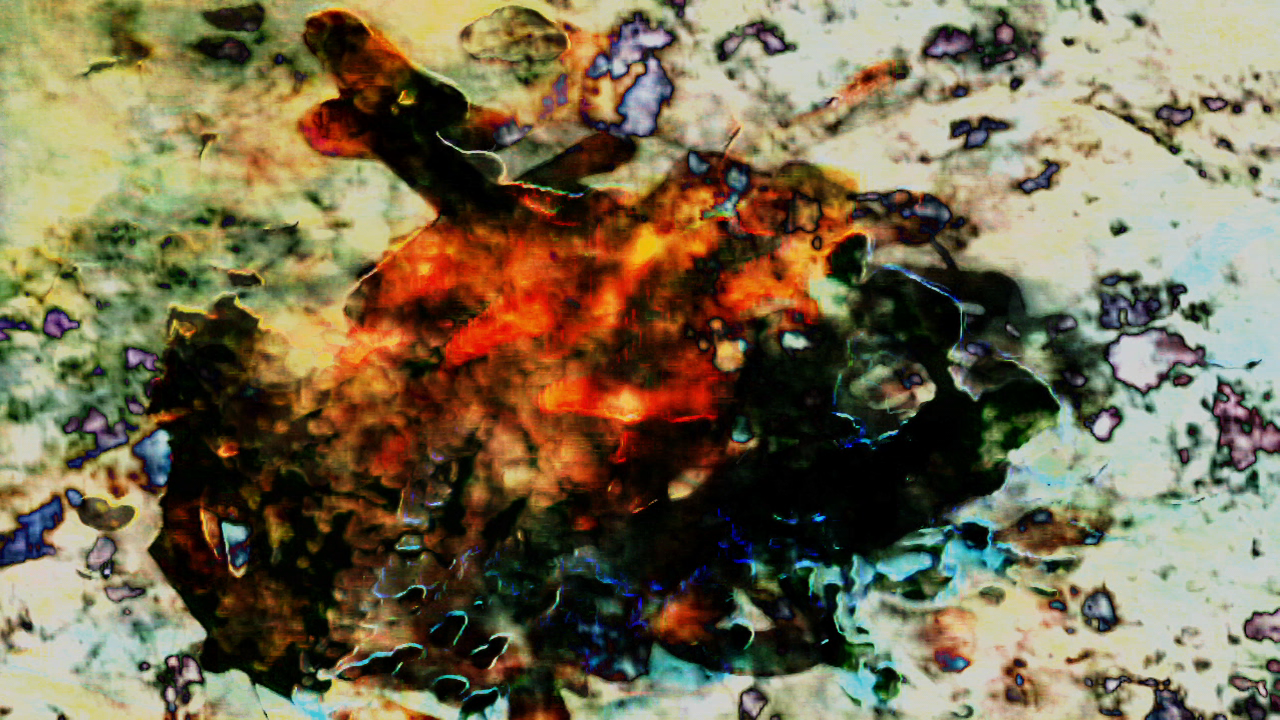
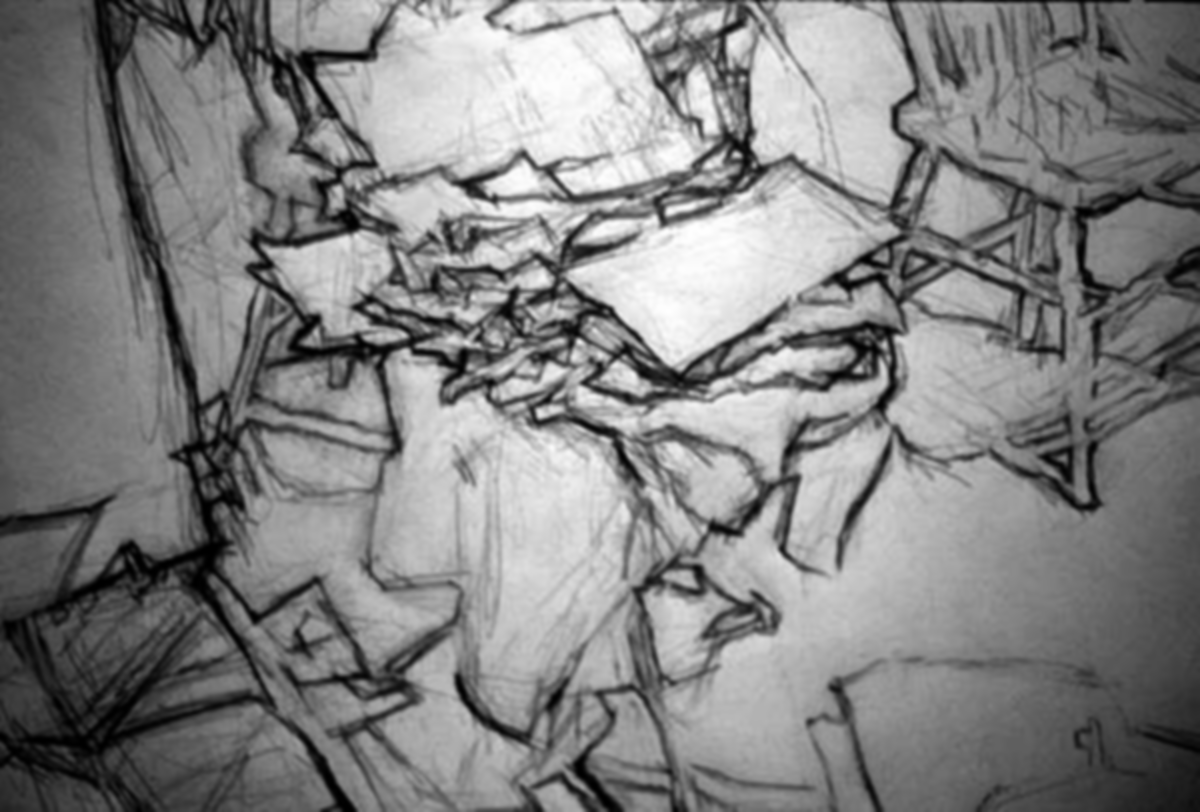
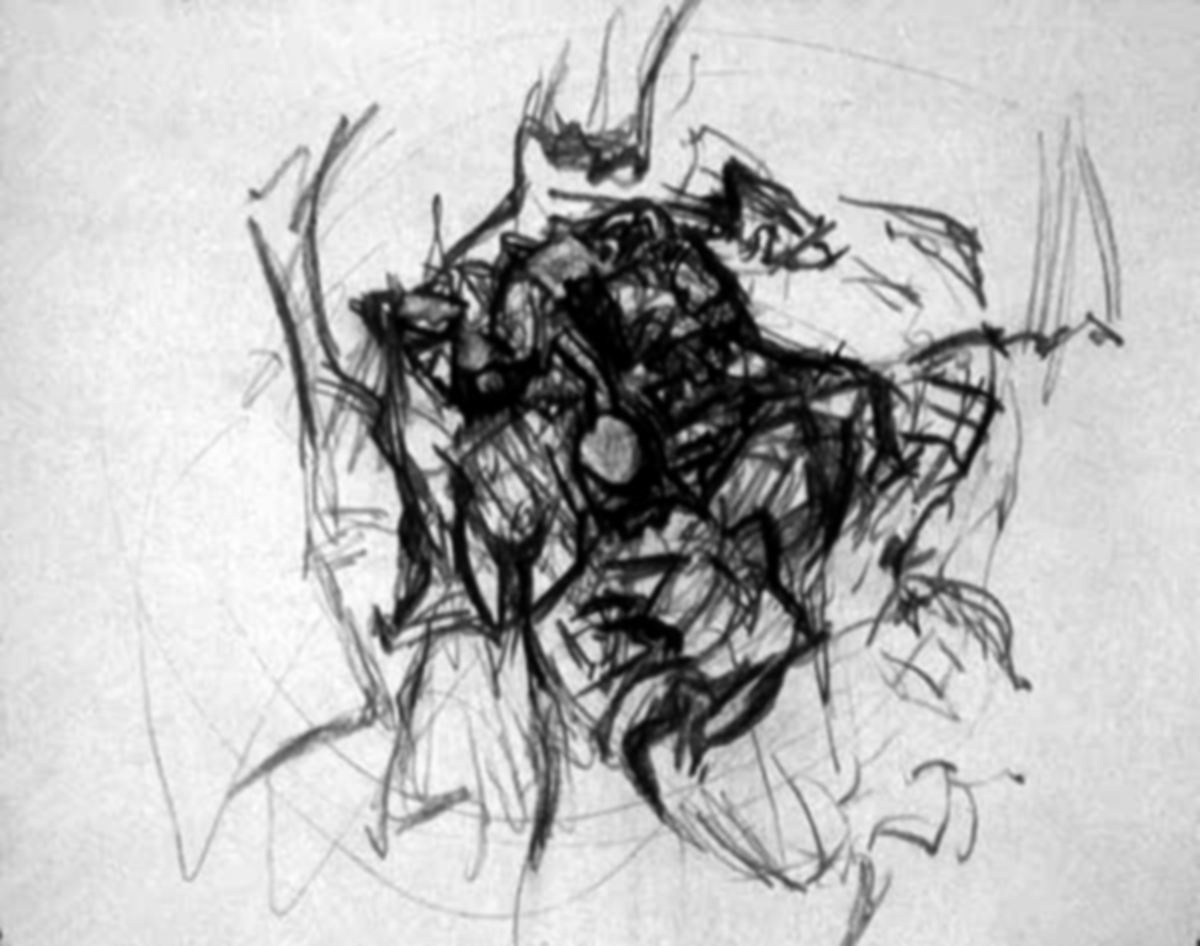
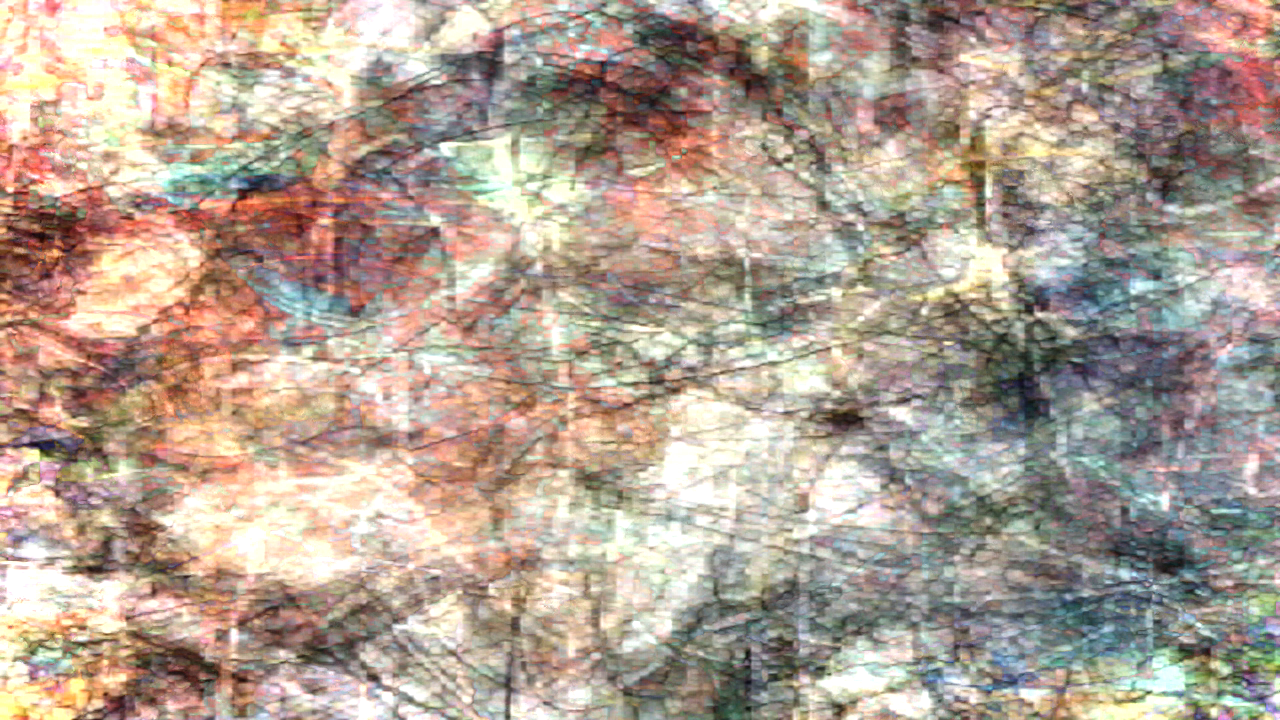
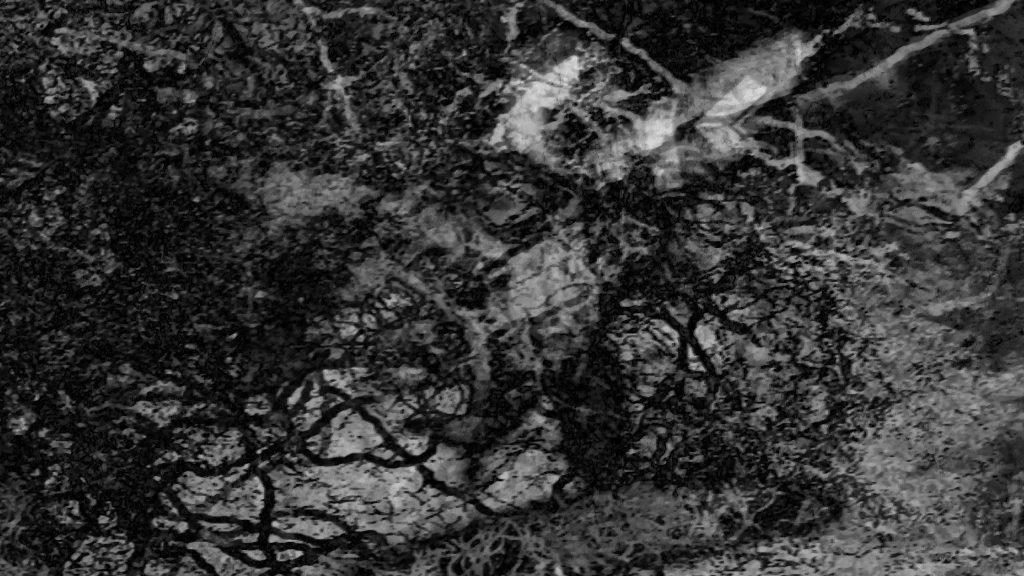
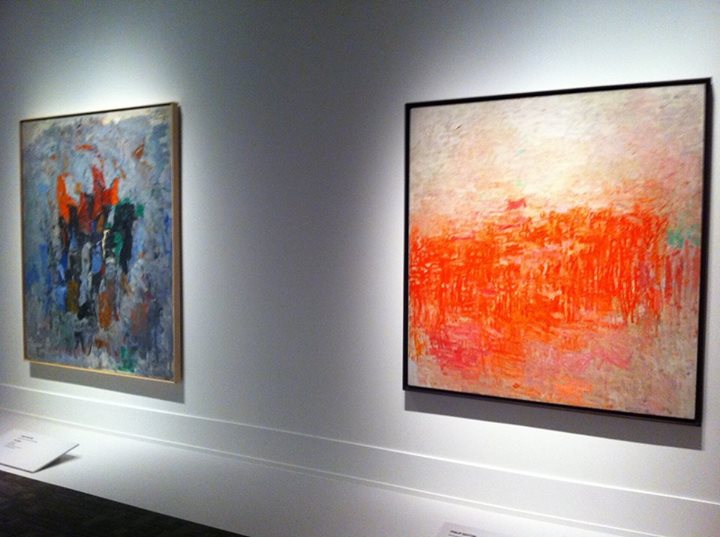
Christian, I only saw your reply today (Oct. 5), hence my late reaction to it.
I recall a time when I was teaching at the NY Studio School (nyss.org) while living in Brooklyn.
The subway ride was most often “used” for reading, and the experience of reading two very different books has stuck in my mind (this was around 1980): “Shogun” made me miss my stop many times so engrossed was I in the story.
But the other book, “One Hundred Years of Solitude,” which also made me miss my stop, probably even more often than “Shogun,” was of a totally different order: most of the time, I missed my stop not because I was engrossed in the reading, the book at that time was resting on my lap, but because I was totally gone into the most intense and vivid “rêverie” (“daydreaming?”) I have ever experienced.
Only “À la recherche du temps perdu” (“In Search of Lost Time”) has done that to me.
So I don’t know what it is you are looking for, but I do know what I am working for, and towards.
In my not so humble opinion, Art has a genuine purpose, and it is to bring us all back to ourselves, and not “just” that, but to “ourself” or better yet, to “myself” as what it is, an infinite mystery.
The American composer Charles Coleman, with whom I recently started collaborating, said something that is amongst the most lucid comments I have ever received about the work: “…I very much like the general consistency with the music, and yet, it isn’t too specific. It’s as if the music were blurting out the visuals from an overall mess of sound. Colorful and spattered, yet with a vague foundation that holds it all together…” (You can read the full comments as well as seeing the movie they are addressed to here: https://vimeo.com/85285097)
Another comment which connects with my work in ways I can relate to is from an old friend, a former student of mine (at NYU, around 1982 or so), who was familiar with my natural media work but was discovering my “time art” is this: “My questions, at first, were around the movement between the sound/music and the imagings.
The movements’ relationship felt uncertain, then as I kept a soft eye on the paintings moving–all worked…together.”
That “soft eye” is the key, no longer “looking for” but “just looking.”
“Drifting?”
And by the way, I do not use After Effect at all, everything you (may) see in my work is “hand-made,“ definitely am rolling my own (with Wacom tablets), though with the help of a few pieces of software that have been and are being developed by formidable friends who are aware of my evolving needs, friends who have the knowledge needed to create complex applications which allow me to work “by way of not knowing…”
To answer the question from a different viewpoint: No.
The viewpoint being that of a programmer for a festival, for whom anything above 6 minutes is a challenge to make fit into a programme.
And I’d like to apologize for the following rant, but I’m tired of the lack of self criticism found in our profession:
However, as a practitioner, I would also give a personal opinion on abstract animation, as well as abstract art. Abstract painting initially had a hard time, until artist’s managed to create artwork that would somehow manifest what they found while creating it. Rothko’s canvases of paint can only impress when seen in person, only then can the impression of the colour on the retina have its effect- a reproduction loses too much, too much of the pigment, too much of the texture, and most of all, too much of the size. The oppressive force of the painitng is lost, when not seen in a gallery. Similar things are true for, say, abstract minimalist sculpture, which manage to instill in the beholder a sense of serenity, whcih can’t be reproduced by a picture of it.
Behind Liverpool street station in London there’s a Richard Serra sculpture – three gigantic steel sheets, entwined in a triangular shape. From the outside, not much to look at, – some random abstract shapes wedged between more abstract shapes, created by the mix of architecture. However, once one steps inside this pyramidal space and looks up, one is overcome with a feeling similar to entering a baroque church: sheer awe. The noise of the city becomes dull and softened, and there is nothing to behold but the rusty texture of the steel, and the little circular opening at the top, which is nothing but pure sky-blue.
The abstract Artwork conveys well, and in an instant, what the artist has found.
A piece of painting or sculpture can also manifest, very well, the dynamic action required to produce it- it can translate a movement of the artist’s hand- something, which, funnily enough, animation can not, due to the lenghty process of its creation.
It can’t convey the dynasim a single bold brushstroke, because the brushstroke is gone within the fraction of a second.
(this is a violent generalisation)
If, however, a piece of animation can convey ‘whatever it is the artist has found while making it’, and it can convey this instantly, hitting the audience like the intense, mind-numbing scent of the beeswax of a Wolfgang Laib installation, it can find an audience, even a festival audience (see Mirai Mizue’s ‘wonder’, as a great example of the artist translating his enjoyment of drawing colourful shapes into film – Len Lye’s ‘Free radicals’ also works well, and adds excitement once the audince has figured out the arduous technique employed). The question remaining is: how long can this ‘whatever it is the artist has found while making it’ keep the mind and senses occuppied?
Never forget due to the temporal nature of film, the artist is spoonfeeding the audience.
If all the audience can find is ‘shapes reacting to sound’, no wonder there’s a time limitation on attention.
I tried watching some of your work, and couldnt help but find my mind drifting inevitably towards an analysis of what I was seeing, and after I had mentally reverse-engineered the cascade of buttons in After Effects, I frankly lost interest.
what is it you’ve found in your work? I admit that I tried and failed at ‘getting it’.
Very interesting work and commentary
I suspect the issue is broader than animation festivals versus art galleries and museums. Our society is developing a worldview and way of being that posits silence and especially “ not-knowing” as “things” that must be “filled” and/or avoided. I’ve written a lot about this, but as long as we believe that we know what “reality” is, that it has been figured out, that there is nothing new to discover via our personal perception, we are going to completely fall for the “life is a bitch and then you die” agenda. I was at a festival screening of one of my recent movies yesterday (“12 x 30, Blind” at the “Rendez-vous du cinéma québécois” here in Montréal) and once again noticed that even amongst the few precious people who do go see “Experimental/Abstract Animation and Film programmes,” the leaning is still towards the entertaining and “smart,” much less towards the elusive and poetic (there were some very good pieces in that programme, but the ones that had that entertainment/smart veneer were by far the more popular). And in “habitual” animation festivals, I have a vivid memory of an instance in Ottawa (OIAF) during which a programme of historical films was interrupted for a few minutes because of technical problems (film broke), and within seconds of our facing a blank screen, people started to “fill” the silence with jokes and all sorts of noises so that (in my not so humble opinion), they would not have to spend any amount of time alone with themselves. I still find audiences in music festivals far more capable of delaying gratification than the average animation festival goer can (“entertainment dependency” is after all the subject of my above paper), but being a painter (my “real” identity), I fear what is also happening in museums and galleries, as evidenced by this amazing photo: http://nondidjuti.net/animation/Kids_and_Rembrandt.html
If we are hooked on entertainment dependency, we are also hooked on mediated experience (the two go hand-in-hand I believe).
I think that animation festivals are likely to remain in the orbit of entertainment, but there is room for a counter-festival, perhaps under the aegis of a museum or art gallery, dedicated to more challenging works. People don’t show much more attention in museums (the average amount of time spent contemplating an artwork by the average museumgoer is terribly brief) but there is more room for the experimental in an institutional/gallery setting than a film festival.